#salamander shark
Explore tagged Tumblr posts
Text

shark of the day: salamander shark, parmaturus pilosus
------------------------------------------------------------
salamander catsharks, or just salamander sharks, are small deepwater catsharks. they only grow to be around 64 cm(~2.1 ft) long. salamander sharks are found in deep water over the continental slopes around japan and china. they feed on small invertibrates and bony fish. salamander sharks have notably high levels of squaline in their livers.
16 notes
·
View notes
Text

Final animal before bed..
153 notes
·
View notes
Text
Todays shark is...
The Salamander Catshark!

Fun Fact: The Salamander Catshark is a species of ground shark found in the Northwest Atlantic, from Japan to Taiwan!
#shark a day#shark#marine life#salamander catshark#i keep forgetting to add sharks to my wheel#ive honestly been playing forsaken alot HELP#and having my brain be taken over by the guest 666 hyperfixation 💚💚
88 notes
·
View notes
Text
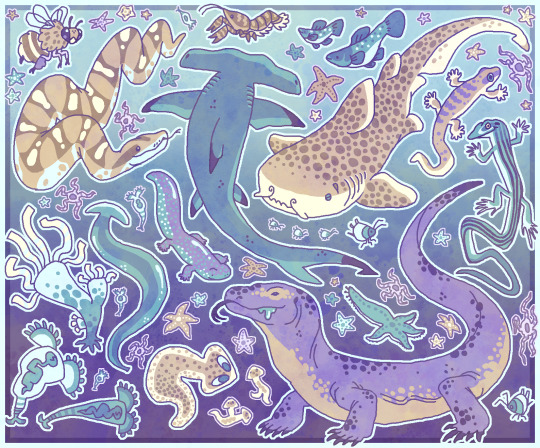
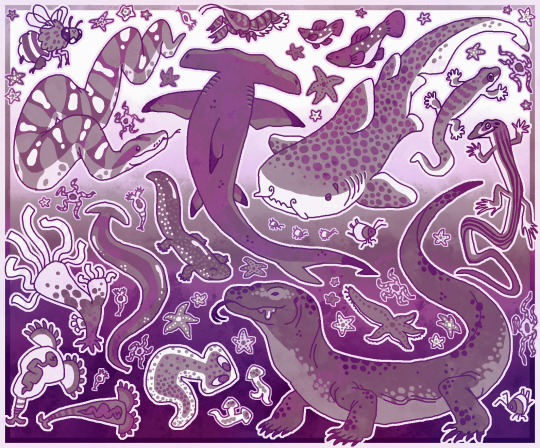

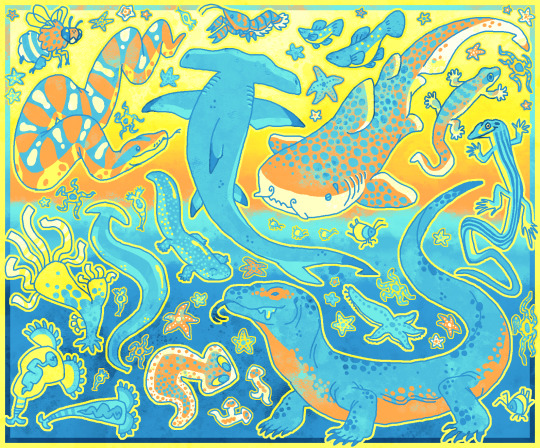
💕Happy late valentines/ace week!!! 💕
This piece is a celebration of animals that can reproduce asexually in various ways. Under the readmore you can find a key to the species included and some information about how they reproduce.
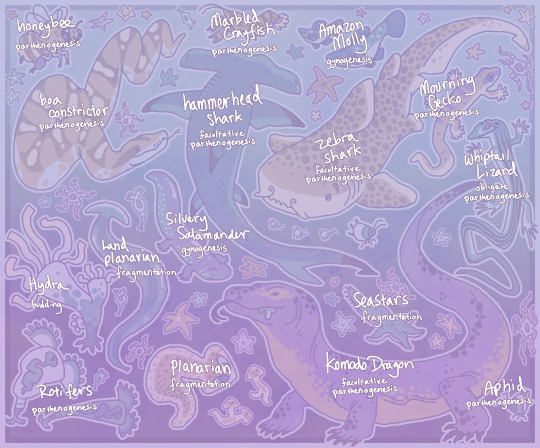
These are very simplified definitions, if you're interested in this stuff definitely do more research and reading! The intricate details are really fascinating and specific to each animal- plants are even crazier!
Budding: a new individual develops then detaches from the parent when mature
Fragmentation: a new individual grows from a detached piece of the parent organism
Parthenogenesis: a new individual forms from an unfertilized egg
Facultative Parthenogenesis: the organism can reproduce sexually and/or asexually
Obligate Parthenogenesis: the organism can only reproduce through parthenogenesis
Gynogenesis: a form of obligate parthenogenesis that requires the presence of sperm without any actual genetic contribution
#my art#aroace#asexual#komodo dragon#zebra shark#silvery salamander#mourning gecko#whiptail lizard#boa constrictor#planarian#too many to tag everything but those are the big ones#rotifer
328 notes
·
View notes
Text
Y'all like shorks? Check this out! The third book in a series about shorks is live now on kickstarter! Written and illustrated by friends of mine (English translation edited by yours truly), this book is about the pirate adventures of a bull shork and his ragtag crew of otters, a beaver, a crab, a salamander, a rat, and a pair of crows, as they take on expensive yachts and large container ships that block canals. https://www.kickstarter.com/projects/siyann/the-revenge-of-captain-darkreef/
#shorks#shork#pirate#pirates#sharks#shark#beaver#crows#otters#salamander#childrens illustration#childrens books#childrensstories#illustrated book#kids books#kid's books#children's literature#children's books#children's illustration
3 notes
·
View notes
Text

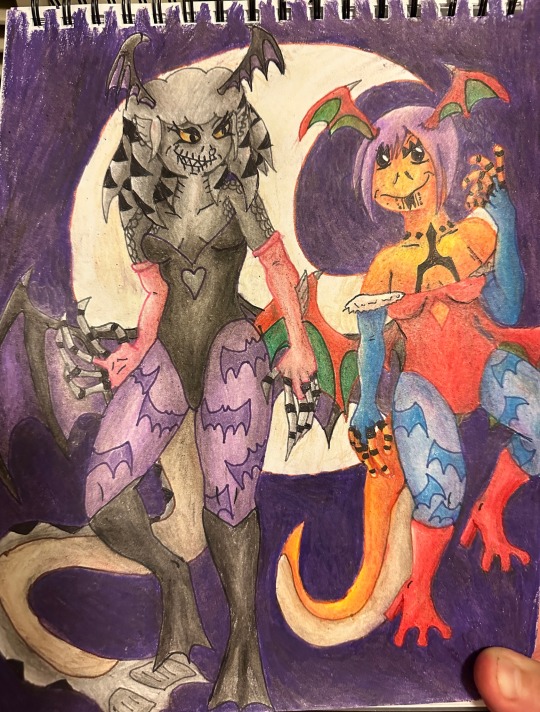



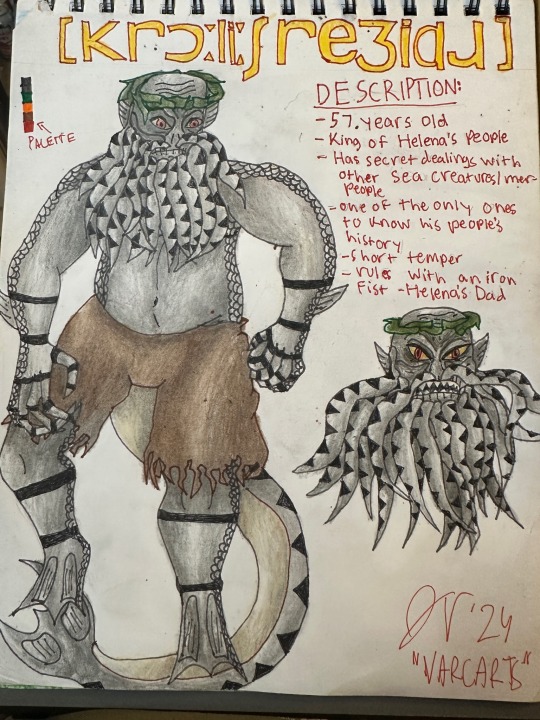
Hey all, I’m Varc, and this is “Varc©️Brand Arts N’ More.” These are several drawings of my OCs, including Helena Gorton, a sharky mermaid who’s also a musician and dentist, her parents, the king and queen of the undersea kingdom from which she escaped, Aja Harrison, a red salamander woman from Pennsylvania who plays trumpet and is a dental assistant, Lina Gibson, a cat woman and fashion columnist, and Herman Liong, Helena’s dental assistant and a death metal musician/frontman. I’ll post more soon.
Other socials and creative places:
X: @RealJakobVMusic,
TikTok: @varcartsandmusic
YouTube: VarcArts and Music
Instagram: @gettervarcarts
SoundCloud: Jakob V Music
Wattpad: @gettervarcwrites (I have a story with my OCs there, called, “The History of Helena Gorton, DDS”)
Stay tuned for more art, music, and writing updates. Until next time, peace, love, mermaids, and big robots! ✌️❤️🧜♀️🤖
5 notes
·
View notes
Text

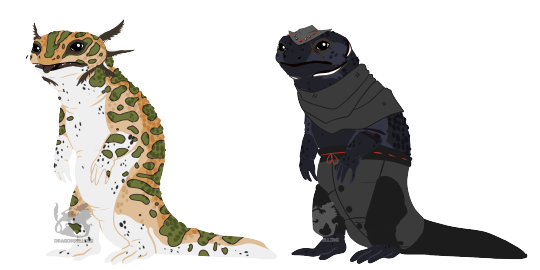
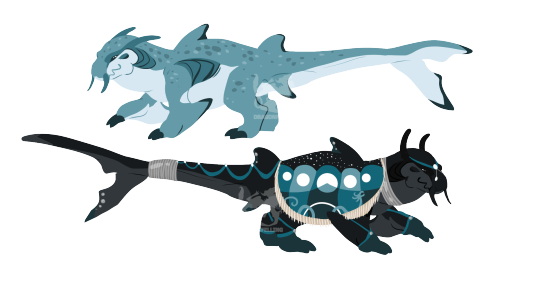
Official Ascendancy Sophonts post (3) Eute and I Peshka
PLEASE, do not use for your own DND stuff or as ocs without asking me first.
#ascendancy#art#digital art#eute#ipeshka#i peshka#peshka#salamander#axolotl#shark#fish#dnd#types of guys#sophonts
39 notes
·
View notes
Text


rwby x monster hunter ttrpg doodles
#ash art#my ocs#dr black#stygian black#salamander#axolotl#shark#alien#she's something we don't know what entirely
9 notes
·
View notes
Text
Monterra creature pack #1
This is a collection of creatures that exists within my webcomic, Monterra: Ice and fire, that don’t play a major role but exist in universe. I have already uploaded these to ko-fi and patreon, so its time to upload them here as well.

Snow lizard
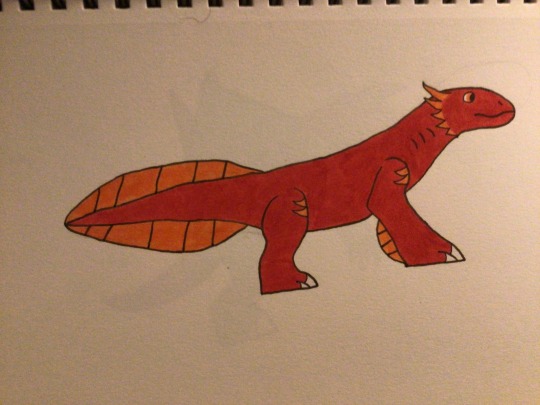
Spark salamander

Iceberg turtle

Molten carcharodon
#creature#creature design#art#my art#artists on tumblr#lizard#reptile#turtle#salamander#amphibian#shark#fish#sharks#Batch of random creatures#I've had these designs for a while now#story stuff
2 notes
·
View notes
Text
Blake: ...Go ooon~.
Ruby: (Covering her ears) PLEASE, DO NOT GO ON!
Wolf Faunus Ruby: Hey, Ren, Jaune, how does it feel to be the only two humans in our teams?
Ren: Annoying.
Jaune: People either hate us for "Getting to damn lucky" or Worse they say something like "So what's it like in the Bedroom."
Lynx Faunus Weiss: That's Disgusting!
Salamander Faunus Yang: Damn. Need Me and P-Money to teach some people lessons?
Fox Faunus Pyrrha: Yes. I would like to inform them of proper etiquette when speaking to fellow Huntsmen in Training!
Bear Faunus Nora: ... Well Pyr's ready to kill.
Nora: Also Jaune and Ren are Faun-
Jaune: *Covers Nora's Mouth* SHUT UP!
Yang: Wait what?
Pyrrha: You're Faunus?
Ren: I... Yes. We are.
Ruby: Any reason you kept this from us? I mean, You don't need a reason, but if you feel like telling us We'd appreciate it! All up to you.
Jaune: Just. Never came up.
Pyrrha: If you wanna keep it a secret You can. It's not our place to know unless you tell us.
Jaune: Aw, Thank-
*CRUNCH*
Jaune: MOTHER OF PEARL!
Nora: They're a shark and snake Faunus-es-es-es's!
J+R: Nora!
Weiss: Nora, it isn't nice to reveal other's secrets. It's not like they have visible traits. We don't need to know. Also don't bite people.
Yang: Yeah, it's not like it's their dicks.
Jaune: *Beet red*
Ren: *Blushing*
Pyrrha: ...
Ruby: ...
Weiss: ...
Yang: Oh my gods you have snake and shark penises.
Jaune: *Still Blushing*
Ren: ... Technically Mine are Hemi-penises, and Jaunes are claspers.
Normal Blake: *nose Bleed* Please! Do continue!
#rwby#final fantasy vii machinabridged#team four star#ruby rose#weiss schnee#blake belladonna#yang xiao long#jaune arc#nora valkyrie#pyrrha nikos#lie ren#wolf!faunus ruby#lynx!faunus weiss#salamander!faunus yang#fox!faunus Pyrrha#bear!faunus nora#shark!faunus jaune#snake!faunus ren
262 notes
·
View notes
Text
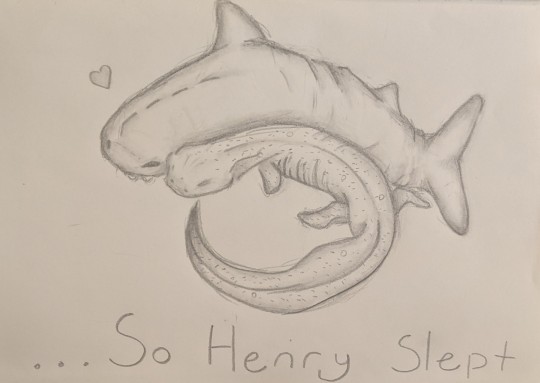
illustrating for my friend's short story :)
It's so sad and so fabulous and I started sobbing over a fictional salamander when I finished it omg. How is my friend so damn good at writing holy crap
#art#traditional art#pencil art#artwork#drawing#illustration#story illustration#salamander#amphibians#blahaj#shark art
1 note
·
View note
Text
Banners! I had a blast making these and honestly would love to make more if I found a good reason to.




#illustration#digital illustration#scad#scadillustration#digital art#frogs#axolotl#newt#salamander#turtle#greater siren#sea pig#blob fish#crab#stingray#whale shark#oarfish#eel#tuna#flounder#isopod#dinosaurs#cats#i cant remember what anything else is <3
1 note
·
View note
Note
could you please tell us about parietal eyes or show us a herp with a prominent one? 👁️👁️👁️
So here is a little something I wrote last year...
Parietal Eyes:
The parietal eye (or the pineal eye/pineal body) is a “third eye” on the top of the head of some animals. These eyes are basically part of or attached to the pineal gland on the brain. It is a primitive photoreceptor, that helps regulate circadian rhythm and helps track the position of the sun. It does not form images, nor does it track movement.

EAT A TASTY WETA!!! - photograph by Ryan Photographic
Tuataras do have the most noticeable and pronounced parietal eye.
(SEE MORE TUATARAS)

photograph by Ryan Photographic
It's not very visible on adult tuataras, but it's fairy discernable, if inspected closely on juveniles.
Animals with a “third eye”:
Tuatara, many lizards, frogs and salamanders, some bony fish, lampreys, and some sharks.
Read more here:
Tuatara - Wikipedia
Parietal Eye - an overview | ScienceDirect Topics
Parietal eye - Wikipedia

Carolina Anole (Anolis carolinensis), family Dactyloidae, found in the SE United States
photograph by TheAlphaWolf
304 notes
·
View notes
Text
Elements And Their Correspondences
Earth
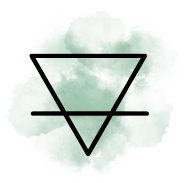
Direction: North
Time: Midnight
Season: Winter
Color: Green, brown
Zodiac: Taurus, Virgo, Capricorn
Ruling planets: Venus and Saturn
Tarot Cards: Pentacles, Coins
Tools: Pentacle, salt, stones, dirt, crystals, wood, flowers
Cystals: Emerald, Jet, tourmaline, quartz, onyx, azurite, amethyst, jasper, peridot, granite.
Animals: gopher, bear, wolf, ant, horse, stag, deer, dog, cow, bull, bison, snake, worms, moles, voles, grubs
Herbs: Oak, cedar, cypress, honeysuckle, ivy, primrose, sage, grains, patchouli, nuts, magnolia, comfrey, vetivert, moss, lilac, lichen, roots, barley, alfalfa, corn, rice.
Rules: Grounding, strength, healing, success, stability, sturdiness, steadfastness, foundations, empathy, fertility, death, rebirth, wisdom, nature, animals, plants, money, prosperity.
Water
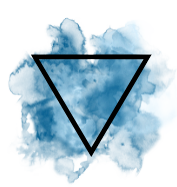
Direction: West
Time: Dusk
Season: Fall
Color: Blue, Indigo, Sliver
Zodiac: Cancer, Scorpio, Pisces
Ruling planets: Moon, Neptune, Pluto
Tarot Cards: Cups
Tools: Ocean, sea glass, cup, bowl, seaweed, hag stones, cauldron
Cystals: Moonstone, pearl, silver, aquamarine, amethyst, blue tourmaline, lapis lazuli, fluorite, coral, blue topaz, beryl, opal, coral
Animals: fish, snake, frog, crab, lobster, eel, shark, dragonfly, seahorse, dolphin, sea otter, seal, whale, alligator, crocodile, beaver, octopus, penguin, salamander, turtle, starfish, koi, coral, barnacle, manta ray, manatee, jellyfish, nautilus, heron, duck, geese, crane, swan, water birds, ammonite, dragons, serpents
Herbs: seaweed, aloe, fern, water lily, lotus, moss, willow, gardenia, apple, catnip, chamomile, cattail, lettuce, kelp, birch, cabbage, coconut, cucumber, comfrey, eucalyptus, gourd, geranium, grape, licorice, lilac, pear, strawberry, tomato
Rules: emotion, intuition, psychic abilities, love, unconscious mind, fertility, self-healing, reflection, lunar energy, deep feelings, curses, death
Fire
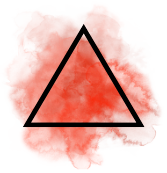
Direction: South
Time: Noon
Season: Summer
Color: Red, Orange
Zodiac: Aries, Leo, Sagittarius
Ruling planets: Sun, Mars
Tarot Cards: Wands or Swords (depends on belief system)
Tools: Athame, candles, swords, wands, dagger, lamp, flame
Cystals: Carnelian, red jasper, bloodstone, garnet, ruby, agate, rhodochrosite, gold, pyrite, brass, fire opal, lavastone, tiger's eye
Animals: Lion, snake, coyote, fox, ladybug, bee, shark, scorpion, horse, mantis, tiger
Herbs: Cinnamon, cloves, ginger, allspice, basil, cacti, marigold, chilis, garlic, mustard, nettle, onion, heliotrope, hibiscus, juniper, lime, orange, red pepper, poppies, thistle, coffee, jalapenos, lemon, cumin, saffron, coriander
Rules: Energy, will, destruction, strength, courage, power, passion, lust, sexuality, anger, war, new beginnings, protection, loyalty, transformation, action, movement, achievement, creativity, desire, willpower
Air

Direction: East
Time: Down
Season: Spring
Color: Yellow, gold, white, light blue, pastels
Zodiac: Gemini, Libra, Aquarius
Ruling planets: Mercury, Jupiter, Uranus
Tarot Cards: Wands
Tools: Feather, wand, staff, incense, broom, bell, sword, pen
Cystals: Amber, topaz, citrine, jasper, agate, pumice, alexandrite, amethyst, fluorite, mica, clear quartz
Animals: Birds, flying insects, spiders, bats
Herbs: Bergamot, lavender, marjoram, peppermint, sage, dandelion, bluebell, clover, frankincense, primrose, lemongrass, pine, aspen, yarrow, violets, vervain, myrrh, dill, anise, aspen
Rules: Intelligence, wisdom, knowledge, logic, thought, communication, truth, inspiration, intuition, memory, creativity
Tip jar
#thecupidwitch#witchcraft#witchblr#witchcore#witch community#witches#witch#grimoire#book of shadows#baby witch#beginner witch#witchy#pegan#peganism#chaos witch#magic#magick#wiccablr#wicca
861 notes
·
View notes
Text
The Varieties of Chinese Mermaids
In the modern day, most people will think of the pearl-crying Jiaoren. However JIAOREN IS NOT THE PERFECT EQUIVALENT OF THE MERMAID in pre-modern folklore.
Chinese mermaids come in multiple types. Most of them can be found in the Chronicle of the Mountains and the Seas (Shan Hai Jing/山海經). Others can be found in the In Search of the Supernatural (Sou Shen Ji/搜神記) or Extensive Records of the Taiping Era (Taiping Guangji/太平廣記).
YUFU/MER-WIFE (魚婦): Zhuanxu was a god-emperor in legendary times, whose accomplishments included sending two of his sons to complete the separation of Heaven and Earth. When he died, fish ate his corpse, becoming half fish and half human women. They live in the Great Wilderness toward the west of China. They combine traits of humans, fish, and snakes. The Classic of Mountains and the Seas states: "There is a fish half-withered, it is Zhuanxu that died and then revived; when the winds blow northward, the sky whips up great geysers, snakes transform into fish, and those are mer-wives."
LINGYU/HILL FISH (陵魚,鯪魚): The Lingyu lived in the northern regions of China, either in the sea or mountain streams. They have human faces and limbs, but fish bodies. They are identified with Chinese giant salamanders or mud carp in the modern day. The Classic of Mountains and Seas states: "The nation of Guye is in the sea, among the Guye mountain range, surrounded by peaks to the southwest. There are great crabs are in the sea. There are Lingyu, which have human heads, feet, and hands, in the sea."
CHIRU/RED RU FISH (赤鱬): The Chiru lived in mountain in the south of China. It was red all over, had a human face, and its call sounded like that of a shelduck or mandarin duck. Eating its flesh protected people from contracting scabies. They are identified with sockeye salmon in the modern day. The Classic of Mountains and Seas states: "Three hundred miles more to the east, there is the mountain called Blue Hill...The Ying Waters emerge from here. Within are many Chiru; their forms are like fish, yet they have human faces, and their cries are like that of a shelduck. Those that eat its flesh will never have scabies."
DIREN/DI PEOPLE (氐人): The nation of the Di People was in the South of China. They were human from the waist up and fish from the waist down. They might have been a mythologization of the real Di People, who lived in western China, spread out from Shaanxi to Gansu. They joined the confederation of nomadic peoples who conquered Northern China during the Sixteen Kingdoms period. The Baima people of Gansu believe themselves to be descended from the ancient Di. The Classic of the Mountains and Seas states: "The nation of the Di People is west of the Jianmu Tree. Its inhabitants have human faces but fish bodies, with no feet."
HAI RENYU/SEA MERMAID (海人魚): The Sea Mermaid lives in the East China Sea. They tend to be around five to six shaku tall. (4'7"-5'6" or 1.4-1.68 meters.) Their upper bodies were that of humans, and they were all very beautiful. Their skins were white as jade, and their tails had no scales, but were covered in fine rainbow-colored hairs. Their hair grew long and wild like horse manes. Their private organs were much like that of humans, and they often sought humans or were sought by humans as mates in coastal communities, where they would live in a pool on their spouse's property. Sometimes they had red feelers or fins on their elbows and backs. Their bodies could not be penetrated by blades, but their fats could be harvested after death to form ever-burning candles. Han Dynasty texts state: "Merfolk have a human-like form longer than one shaku. They are not fit for consumption. Their skins are rougher than those of sharks, and cannot be penetrated by saws. They have little holes on their neck that they breathe through...Their fat is used to light lamps in royal tombs because the fire will never extinguish." Extensive Records of the Taiping Era states: "Sea Mermaids are found in the Eastern Sea. The largest ones are five or six shaku long. They are shaped like humans, with the brows and eyes, mouths and noses, hands and fingers, and heads of beautiful women, lacking in no feature. Their flesh is white as jade, and they have no scales, but thin, soft, and sleek hairs of five colors about one or two inches in length. Their private organs were no different from those of ordinary men and women. Widows and widowers from coastal communities often acquire them and raise them in pools. They mate the same way humans do, and never harm humans."
LOTING YUREN/LOTING FISH-MEN (盧亭魚人): Loting Fish-Men were found in the south of China, mostly around the Guangdong, Macau, and Hong Kong regions. They had humanoid limbs and humanoid faces with yellow hair and yellow eyes, but scaly bodies with fish tails. They lived mostly in the water, feeding on fish, but also built houses from mussel shells, and their favorite snack was chicken blood. They were a mythologization of the Tanka People, a southern Chinese pariah class who were once forced to live on their boats, as well as the Semang People. Ming Dynasty texts state: "The Jin Dynasty rebel Lu Ting was defeated and fled into the Guangdong region, where he lived a fugitive life on the water. After some generations, his descendants were unable to procure food or clothes, so they went about bare bodied and were called Loting. They would often sail out on the sea fishing for food, and they could all lie underwater for three or four days without dying, for they had already become fish." Qing Dynasty texts state: "Among the merfolk are the Loting Fish-Men, who are very numerous on Dayushan Island and the Wanshan Islands. Their adults are like humans, with male and female. Their hairs are dusky yellow and short and their eyes are also yellow, while their faces are black. Their tails are around an inch long. When they encounter humans they dive fearfully into the water. Often they would float along the waves, which would amaze people, who would they chase them. When a man who acquired one their females did the dirty with her, the fish-woman could not speak, only giggle. After a long while, she learned to wear clothes and eat grains. She was brought to Dayushan, where she went back to the water. These are the merfolk who do not harm men."
JIAOREN/SAMEBITO/SHARK-MEN (鮫人): Jiaoren are found in the South Seas. THEY ARE MER-SHARKS. THEY HAVE INKY BLACK BODIES, WILD HAIR, GLOWING GREEN EYES, AND SHARP TEETH. They are usually employed by dragon gods as weavers, capable of working tirelessly and spinning special waterproof silks. Their tears became pearls. They were first equated to Western mermaids by modern fantasy writers romanticizing the fact that they cried pearls.
WA WA YU/KIDDO FISH (娃娃魚): The Chinese Giant Salamander was often called a "mer-person" in the Ming and Qing dynasties, and described having a cry that resembled a baby's wail. To this day the colloquial name is still "Kiddo Fish".
438 notes
·
View notes
Text
Round 3 - Chondrichthyes - Orectolobiformes



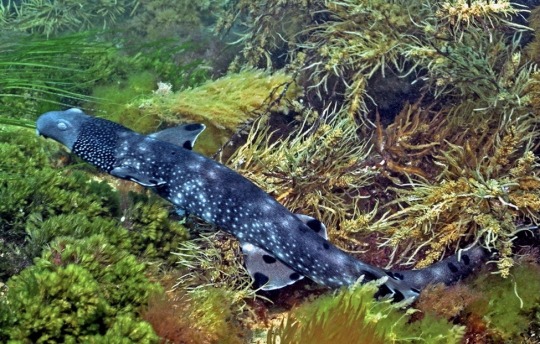
(Sources - 1, 2, 3, 4)
Orectolobiformes are an order of sharks sometimes known as “Carpet Sharks.” They include the families Brachaelurus (“blind sharks”), Ginglymostomatidae (“nurse sharks”), Hemiscylliidae (“bamboo sharks”), Orectolobidae (“wobbegongs”), Parascylliidae (“collared carpet sharks”), Rhincodontidae (“Whale Shark”), and Stegostomatidae (“Zebra Shark”).
Orectolobiformes have five gill slits, two spineless dorsal fins, and a small mouth that does not extend past the eyes. Many species have barbels: tactile whiskerlike sensory appendages near their mouths. Grooves known as nasoral grooves connect the nostrils to the mouth. A spiracle occurs beneath each eye which is used in respiration. Orectolobiformes are commonly called “carpet sharks” due to their flattened appearance and often ornate patterning, with many species spending most of their time resting on the ocean floor. However, this order also contains the Whale Shark (Rhincodon typus) (image 2), the largest chondrichthyan, whose record holder had a length of 18.8 m (61.7 ft). The smallest of the order, at up to about 30 cm (12 in) long, is the Barbelthroat Carpet Shark, (Cirrhoscyllium expolitum). Orectolobiformes are a diverse order of sharks with differing sizes, appearances, diets, and habits. Most are nocturnal. Most carpet sharks feed on the seabed in shallow to medium-depth waters, detecting and picking up molluscs, crustaceans, and other small creatures. Wobbegongs (image 1) are ambush predators, camouflaging on the seafloor and swallowing prey that swims too close. Whale Sharks are filter feeders.
Reproduction methods among carpet sharks also vary. Some species lay eggs directly into the water column or enclose them in horny egg cases. Some will push their egg cases into crevices for protection. Other species are ovoviviparous and give live birth. Pups are born relatively advanced and independent.
Orectolobiformes first appeared in the Early Jurassic. The oldest known orectolobiform genera are Folipistrix and Annea.
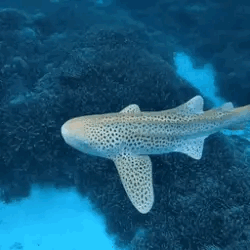
Propaganda under the cut:
Nurse Sharks are nocturnal and largely solitary at night, but they spend the day resting in groups, often piled on top of each other for safety.
The largest confirmed individual Whale Shark (Rhincodon typus) had a length of 18.8 m (61.7 ft), though 14 m (46 ft) is a more likely upper limit. Their lifespans are estimated to be between 80 and 130 years. Along with the Basking Shark and Megamouth Shark, they are the only other filter-feeding shark.
Blind Sharks have fully functioning eyes, but were named so because they would close them when caught by anglers
The Zebra Shark (Stegostoma tigrinum) was named for the black and white stripes of juveniles. As adults, their zebra stripes fade and are exchanged for cheetah print. Early taxonomists thought that juvenile zebra sharks were a different species due to how different their patterning looked!
In Madagascar, Whale Sharks are called Marokintana in Malagasy, meaning "many stars", after the appearance of the markings on the shark's back.
The Epaulette Shark:
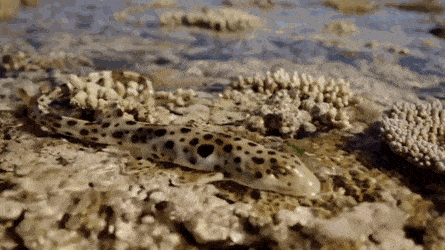
As an adaptation to living in tidal pools and shallow coral reefs, the Epaulette Shark (Hemiscyllium ocellatum) moves by seemingly walking, bending its body from side-to-side in a salamander-like gait, pushing off of the substrate with its paddle-shaped pectoral and pelvic fins. The shark is capable of swimming, but often prefers to walk along the sandy or coral bottom even when the water is deep enough to allow it to swim freely. This mode of locomotion even enables the shark to crawl out of the water to access isolated tidal pools as it hunts for worms, crustaceans, and small bony fish, and it can cope with oxygen depletion in these conditions for over three hours.
#first of my personal favs for Round 3 Zebra Sharks AND Whale Sharks#and if I had to pick between the two honestly I would have to pick zebra sharks they are so angelic 2 me#round 3#animal polls#chondrichthyes
138 notes
·
View notes